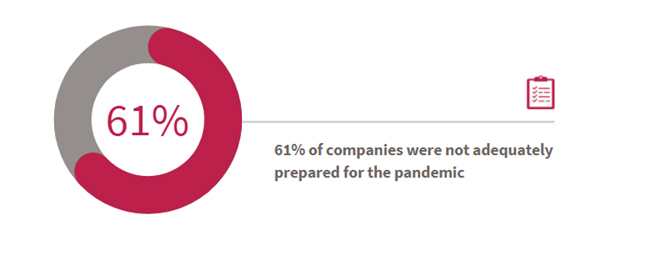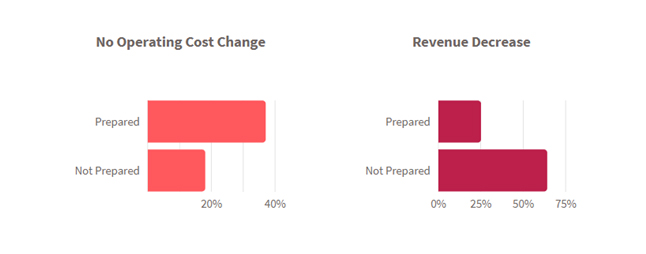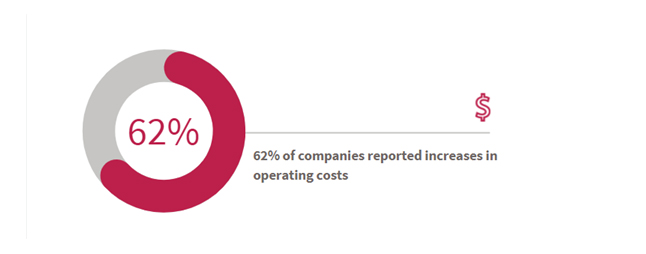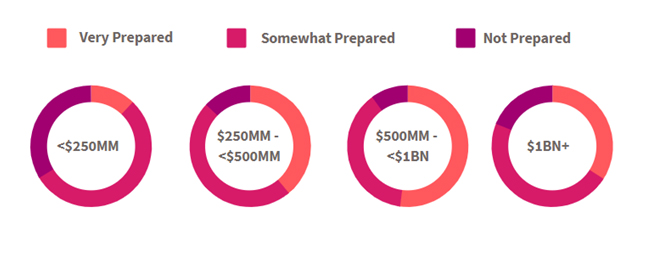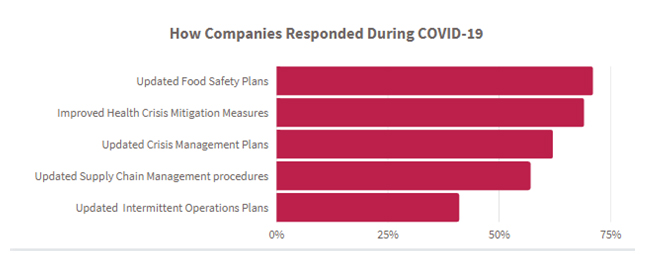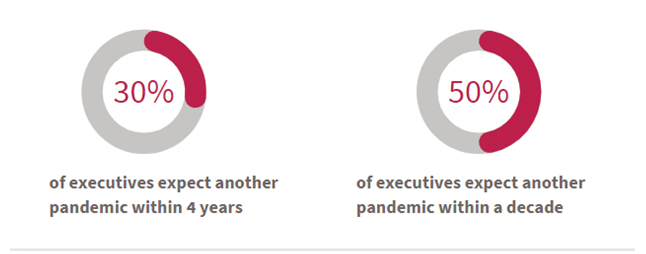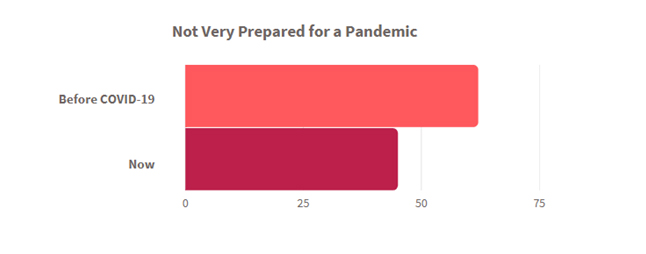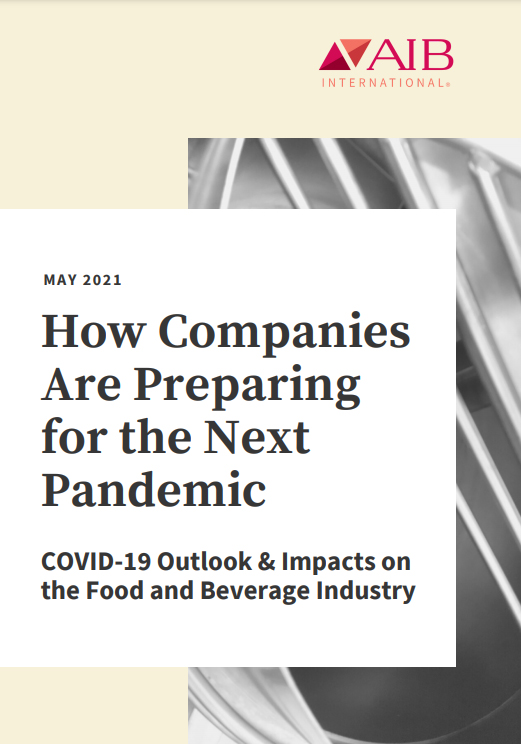
To better understand how the pandemic has impacted the food industry and its outlook on what’s next, AIB International surveyed 325 food and beverage executives across North America and interviewed an additional 16 about whether their companies were ready for COVID-19, what the pandemic has cost their companies and how they are preparing for the future.
The Food & Beverage Industry Wasn’t Prepared for COVID-19
The majority of companies (61 percent) say they were not adequately prepared for the current pandemic. While most had plans in place prior to COVID-19 (63 percent), a third of them said these plans did not adequately address COVID-19 and its effects. Thirty-eight percent said they didn’t have pandemic preparedness plans at all prior to the pandemic.
Companies That Were Prepared Performed Better Financially
Food and beverage companies that say they were better prepared were 2 times more likely to report no significant change in operating costs and were 2.5 times less likely to have experienced a decrease in revenue.
Overall, 62 percent of companies experienced an increase in operating costs, with an average operating cost increase of 11 percent. One in three companies experienced a decrease in revenue, averaging 27 percent.
The top reasons for increase operating costs were:
- PPE/ Work Environment Changes
- Sanitation
- Employee Training
- Supply Chain Sourcing
- Hazard Pay
Smaller Companies Were Less Prepared and More Financially Impacted
Our research found that companies with revenue of less than $250MM felt less prepared for the COVID-19 pandemic and reported larger decreases in revenue than larger companies.
Additionally, processors and manufacturers with less than $500MM revenue were less likely to have a plan in place that adequately addressed the COVID-19 pandemic.
Large Companies Were Impacted the Most by Increased Operating Costs
Large companies ($500MM – $1BN) were most impacted by increased operating costs, reporting 20 percent average increases. 75 percent of the largest companies, those with more than $1BN in annual revenue, were also more likely to report increases in operating costs.
Overall, three in four food and beverage companies were either impacted by increases in operating costs or decreases in revenue. Of this group, a quarter reported the worst-case scenario – both an increase in operating costs and a decrease in revenue.
Companies Faced Workforce, Sales and Logistics Issues Due to COVID-19
The top three issues faced by companies due to the COVID-19 pandemic were: Employee absenteeism; Cancelled or reduced orders; and Distribution interruptions.
These results were not surprising, as many companies established protocols that directed employees to stay home when they have a fever or have been in contact with someone who had tested positive for COVID-19.
Many companies had their orders reduced or cancelled when they were unable to deliver their usual quantities due to a reduction in their workforce or interruptions to their normal distribution.
Companies are Updating their Food Safety and Health Crisis Plans in response to COVID-19
The majority of executives said they were addressing the pandemic by updating their food safety plan, improving their health crisis mitigation measures, and updating their crisis management plan to include pandemics.
At AIB International, we’ve been providing companies with free reviews of their pandemic preparedness plans, while also helping companies get started on developing plans if they don’t have one. Through this work, we found that 75 percent of pandemic preparedness plans were still missing critical requirements in their food safety and health crisis mitigation plans. By missing some of these most important steps, companies were left at elevated risk.
Executives Anticipate the Next Pandemic Very Soon
Make sure you’re updating your plans to meet best-in-class standards for pandemic preparedness. There are free tools to help you get started on updating your plan.
Thirty percent of all Food & Beverage executives think we’ll see another pandemic in the next four years (that’s 2025!) and half think we’ll see the next one within 10 years. In addition, 78 percent of companies are taking steps to prepare now for the next pandemic. For companies that had preparedness plans in place before COVID-19 struck, almost all said they had revised their plans due to this pandemic.
Current COVID-19 protocols are important, but companies should also critically examine their pandemic preparedness plans for the future.
Almost Half of Executives Don’t Feel Very Prepared for Future Pandemics
While more companies now say they more prepared, close to half still don’t feel very confident, with smaller companies (less than $500MM revenue) saying they feel even less prepared.
All Companies Should be Pandemic Prepared
The food and beverage industry wasn’t well prepared when first faced with COVID-19, but almost all companies are now taking action to prepare for the next pandemic.
While, three in four food and beverage companies were either impacted by increases in operating costs or decreases in revenue, these financial impacts and operational disruptions like workforce shortages and supply chain interruptions can be mitigated by strong preparedness planning.
The COVID-19 pandemic has shown us that employees demand greater accountability from their employers, while customers expect order fulfilment throughout crises.
Beyond the specter of employee health, consumers expect brands to maintain high food safety and quality standards, and product availability throughout a crisis. They want independently-verified proof that their favorite brands are well-prepared for the next pandemic.
Whether you already have a written pandemic preparedness plan or haven’t developed one yet, companies need to take action now to ensure their operations hold up against the next pandemic.
